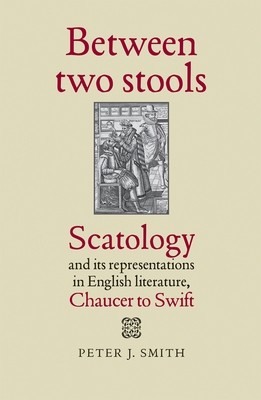
- We will send in 10–14 business days.
- Author: Peter J Smith
- Publisher: Manchester University Press
- ISBN-10: 0719087945
- ISBN-13: 9780719087943
- Format: 13.7 x 22.1 x 2.8 cm, hardcover
- Language: English
- SAVE -10% with code: EXTRA
Reviews
Description
Between two stools investigates the representation of scatology - humorous, carnivalesque, satirical, damning and otherwise - in English literature from the middle ages to the eighteenth century. While a number of recent publications have attempted to analyse the employment of scatology in literature, culture or the arts, they remain, to date, rare examples of a preparedness to discuss such material. This study is the first to consider the topic over such a long historical period, allowing a thorough and original exploration of its foundations and traditions.
Smith contends that the 'two stools' stand for two broadly distinctive attitudes towards scatology. The first is a carnivalesque, merry, even hearty disposition, typified by the writings of Chaucer and Shakespeare. The second is self-disgust, an attitude characterised by withering misanthropy and hypochondria. He locates this shift in sensibility in the crisis of the English Civil War and the aftermath of the Restoration. Smith demonstrates how the combination of high and low cultures manifests the capacity to run canonical and carnivalesque together so that sanctioned and civilised artefacts and scatological humour frequently co-exist in the works under discussion, evidence of an earlier culture's aptitude (now lost) to occupy a position between two stools.
Of interest to cultural and literary historians, this ground-breaking study testifies to the arrival of scatology as an academic subject, at the same time recognising that it remains if not outside, then at least at the margins of conventional scholarship.
EXTRA 10 % discount with code: EXTRA
The promotion ends in 11d.17:30:27
The discount code is valid when purchasing from 10 €. Discounts do not stack.
- Author: Peter J Smith
- Publisher: Manchester University Press
- ISBN-10: 0719087945
- ISBN-13: 9780719087943
- Format: 13.7 x 22.1 x 2.8 cm, hardcover
- Language: English English
Between two stools investigates the representation of scatology - humorous, carnivalesque, satirical, damning and otherwise - in English literature from the middle ages to the eighteenth century. While a number of recent publications have attempted to analyse the employment of scatology in literature, culture or the arts, they remain, to date, rare examples of a preparedness to discuss such material. This study is the first to consider the topic over such a long historical period, allowing a thorough and original exploration of its foundations and traditions.
Smith contends that the 'two stools' stand for two broadly distinctive attitudes towards scatology. The first is a carnivalesque, merry, even hearty disposition, typified by the writings of Chaucer and Shakespeare. The second is self-disgust, an attitude characterised by withering misanthropy and hypochondria. He locates this shift in sensibility in the crisis of the English Civil War and the aftermath of the Restoration. Smith demonstrates how the combination of high and low cultures manifests the capacity to run canonical and carnivalesque together so that sanctioned and civilised artefacts and scatological humour frequently co-exist in the works under discussion, evidence of an earlier culture's aptitude (now lost) to occupy a position between two stools.
Of interest to cultural and literary historians, this ground-breaking study testifies to the arrival of scatology as an academic subject, at the same time recognising that it remains if not outside, then at least at the margins of conventional scholarship.


Reviews